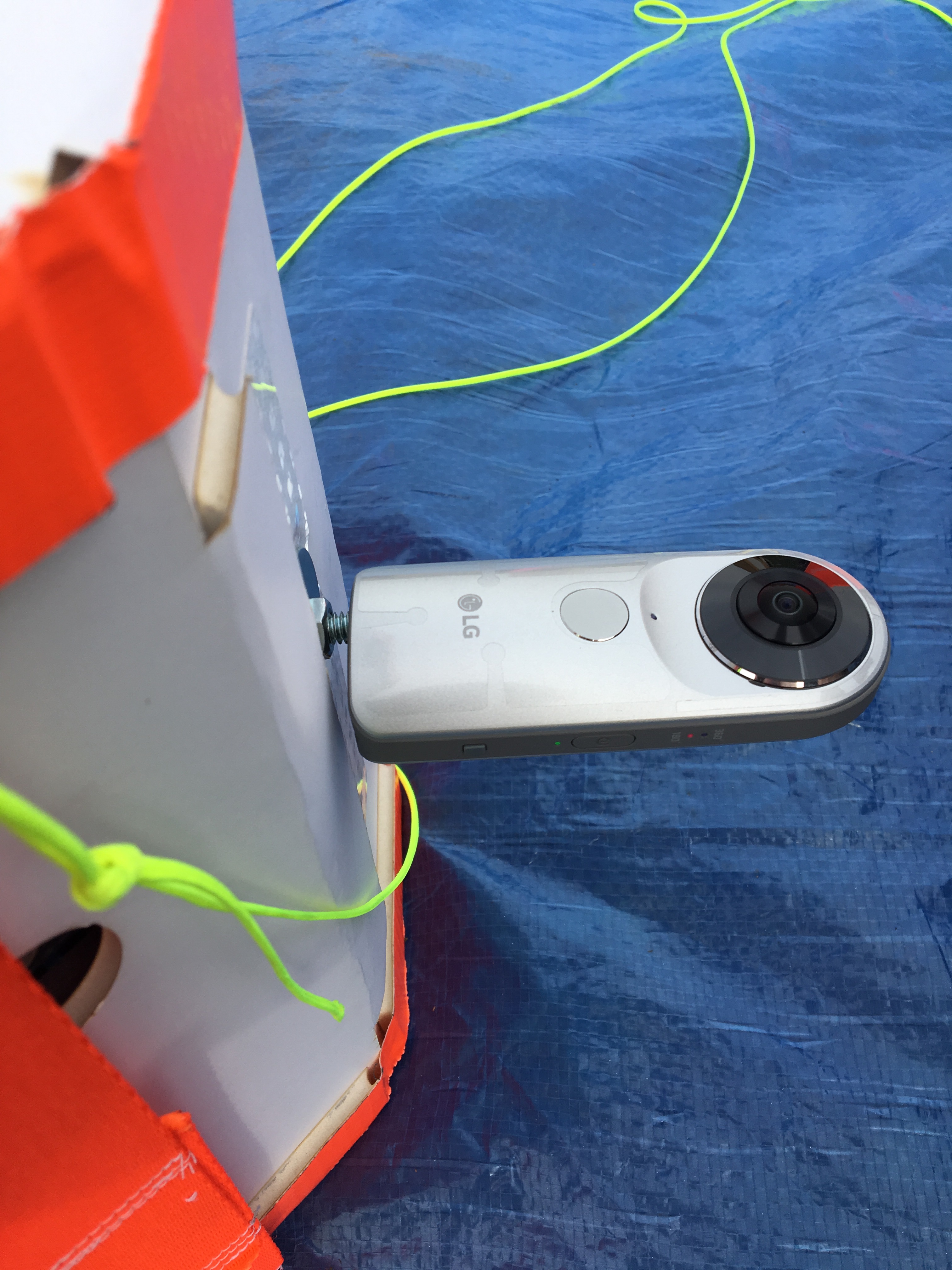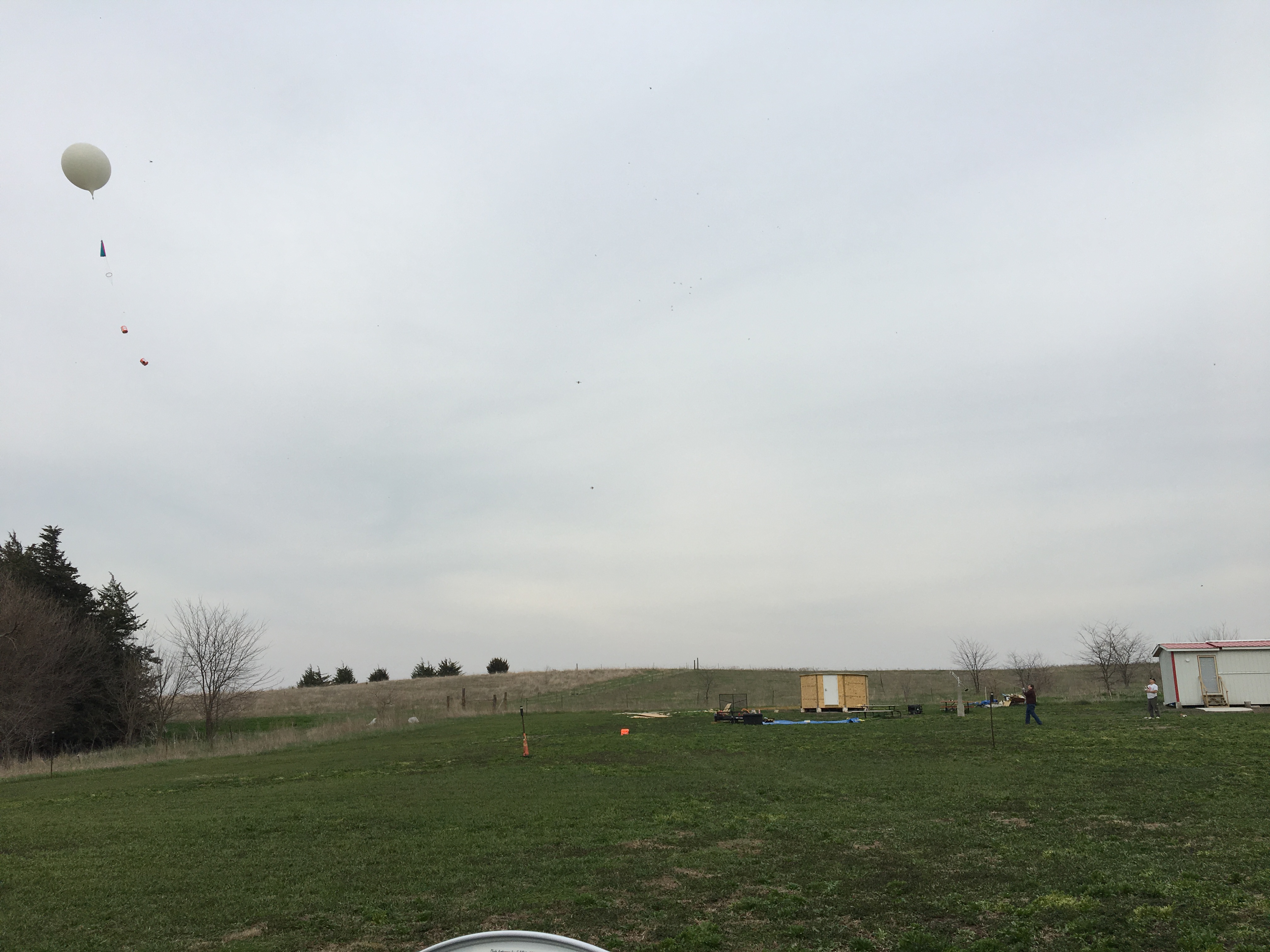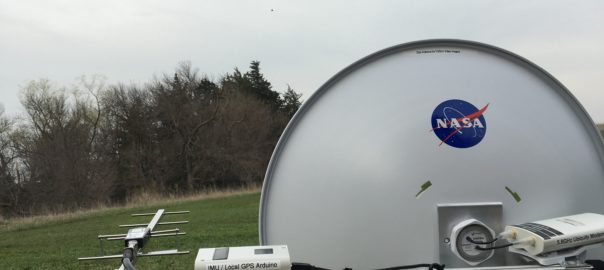Before doing a full-fledged flight of the NASA Eclipse Ballooning payloads, we wanted to do a tethered test to see if the tracking system and the video streaming would work in the field.
We planned to do our tethered flight at the Branched Oak Observatory (BOO). Because the weather forecast looked decent, we set aside Saturday, April 8th to do this testing.
Backyard Testing – April 7, 2017
The night before, we set up the tracking system in the backyard to practice since we did not do testing on it all winter. We started to set up at 6:45 pm. I plugged everything in and started the tracking program on the computer. I then turned on the power to the system. Every time I tried to update the settings, a necessary step before tracking, the program would freeze and grey out. After unplugging things and restarting the program, I was able to get one hit from the GPS before the computer locked up again.
The progression of powering the equipment is important. It seems all of the tracking system needs to be powered before starting the computer program for the tracking to work properly.
The video streaming payload was tested and it transmitted properly.
When we restarted the computer and started the tracking system up one more time and the dish spun around too far – opposite where the payloads were. We unplugged the servos quickly before the dish swung around and some cords were pulled too far. By 8:45 pm, it was dark, we were hungry and stressed out, and decided to give it up for the night.
Backyard Testing – Morning April 8, 2017
The next morning, we tried it again starting at 9:00 am. By 9:30 am, the system was working, but it was pointing in the exact opposite direction of the payloads. Michael took the Iridium GPS payload and drove a few blocks over so the difference could not be attributed to errors with the GPS being too close.
After pondering on the problem, we determined that the problem must lie with the Inertial Measurement Unit (IMU). This is the sensor that contains the XYZ accelerometer, magnetic field sensor, and gyroscope so it lets the dish know its orientation. We realized it was being placed on the bar opposite the direction it was placed before. We had turned it around for transport because it is on a 3D printed piece and we were worried about it being damaged if it was struck while sticking out.
I restarted everything again with the IMU in the proper orientation and then the system pointed where it was supposed to go. We disassembled everything at 11:00 am to pack for the field test.
Tethered Field Test – Afternoon April 8, 2017

We arrived at the observatory at 3:00 pm and started to set up. It took 25 minutes to set up the base station including starting up the generator. I brought extra gasoline, but when it was running, it indicated that it had about 11 hours remaining using the fuel that was already in the generator. It started relatively easily and ran quietly.
Setting Up the Computer
It took about 10 minutes for the computer program to start up and be calibrated with the IMU in the proper orientation and the system pointed in the opposite direction again! Something else must have been wrong with the way we were calibrating the IMU.
I restarted the Spyder program for tracking and it gave me an SQL error saying that it wasn’t connecting. I restarted the laptop and it took a long time as the PC was doing some updating. Once the computer finally started again, the Verizon Jet Pack we were using for internet access inexplicably wanted us to pay for an additional month, even though we renewed the account the day before. The lack of connection is presumably what caused the SQL error.
4:30 pm: Matt Anderson, the COO of Branched Oak Observatory, came to check on us. He set up a hotspot using his cell phone so we could use his internet access.
4:40 pm: I started Spyder program and calibrated the IMU.
4:45 pm: SUCCESS! The tracking was pointing in the right direction. Michael grabbed the Iridium GPS payload and walked to opposite ends of the property and the dish followed him.
4:50 pm: I started the streaming video program.
5:00 pm: The video was playing on the laptop.
Filling the balloon
While I was working with the computer, Michael had been prepping the launch area.
I sewed harnesses for the pods. Michael put reflector strips on the sides of the boxes and taped on the contact information if the balloon broke away from the tether. We attached the APRS and SPOT in case it accidentally released and we would have multiple ways to find it.

Michael has been researching and looking for a good 360 camera to use during the eclipse flight and has not had good luck trying to find the best one. NASA Nebraska Space Grant actually ordered one that looked very promising over a year ago for us and that company discontinued making them and refunded the payment. We were watching the new Nikon 360 cameras that were released, but they had questionable reviews.
This is the LG 360 CAM and it is less than half of the cost of the other cameras we were considering.

Matt brought the Branched Oak Observatory drone out to try to get some footage of the tethered flight.

Michael ordered a downrigger reel to let the string out for the tethered flight and it was to be delivered on Friday, but did not arrive. Instead, he attached the spool of string to a large piece of lumber with screws. We filled the balloon and let it out about 150 ft. It was fairly windy, so we decided not to go any higher.



Once it was set up properly, the tracker worked well. One of the straps from the harness slid over and was covering the video camera. So, we will need to make a modification to the harness or pods so that will not happen again.
At 6:00 pm, we started the clean up and were ready to leave by 6:20 pm.
Conclusions
If we have decent internet access and find a consistent way to calibrate the IMU, I can set up the base station in about 20-30 minutes. If the generator is full, we will not need additional fuel for it. We will need to fix the harnesses so they cannot slip and cover the camera. The next step is to do a full flight and test the limits of connectivity of the streaming video while aloft.
Video footage
The footage from the LG 360 camera is very cool. The problem we encountered is that it shuts off after 20 min. This is unacceptable for the eclipse because it needs to record for at least an hour to witness totality while in the air.
Here are some YouTube 360 videos of the fill and the flight. (30 seconds each) Note: 360 view is not supported on Safari.
